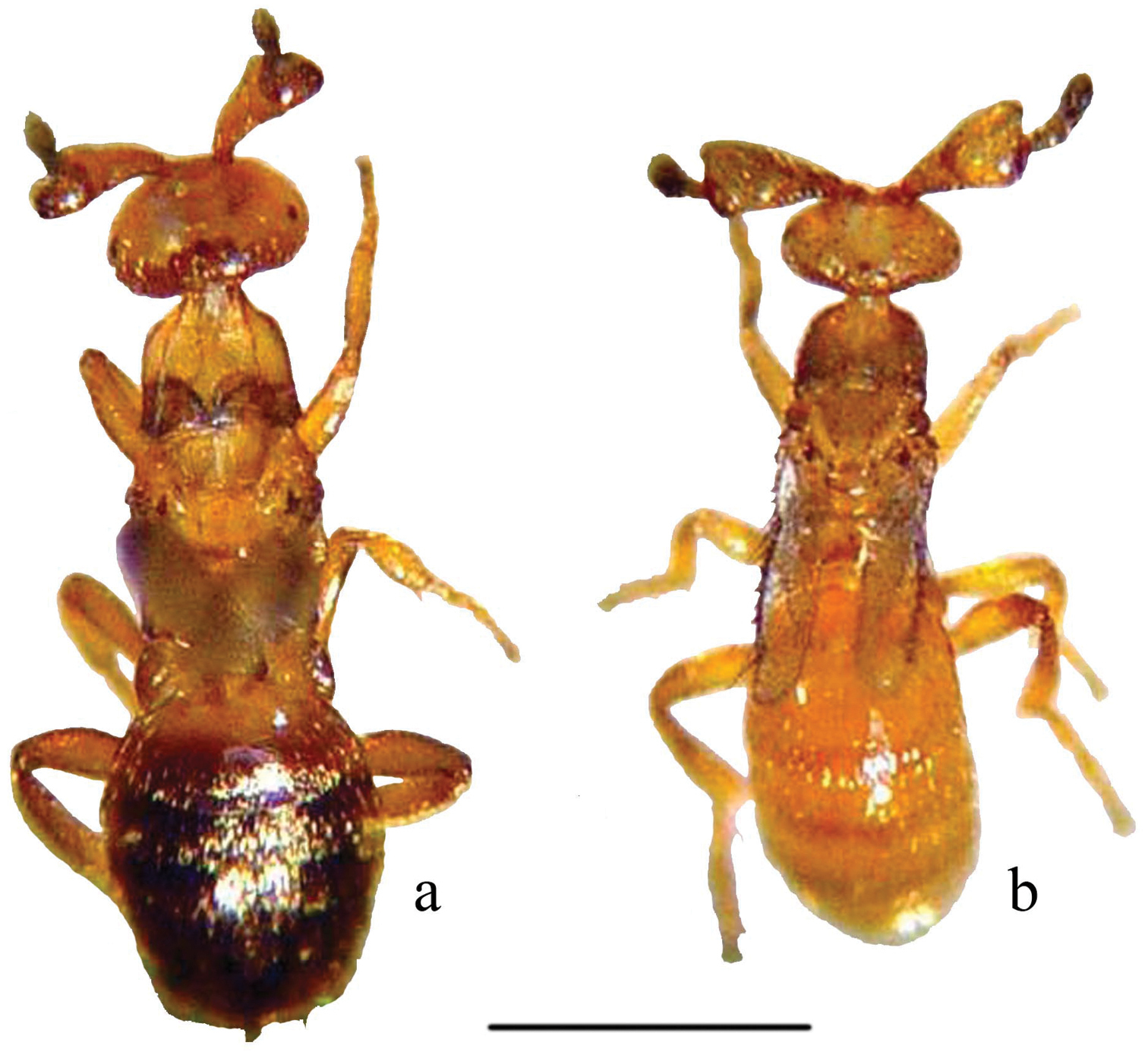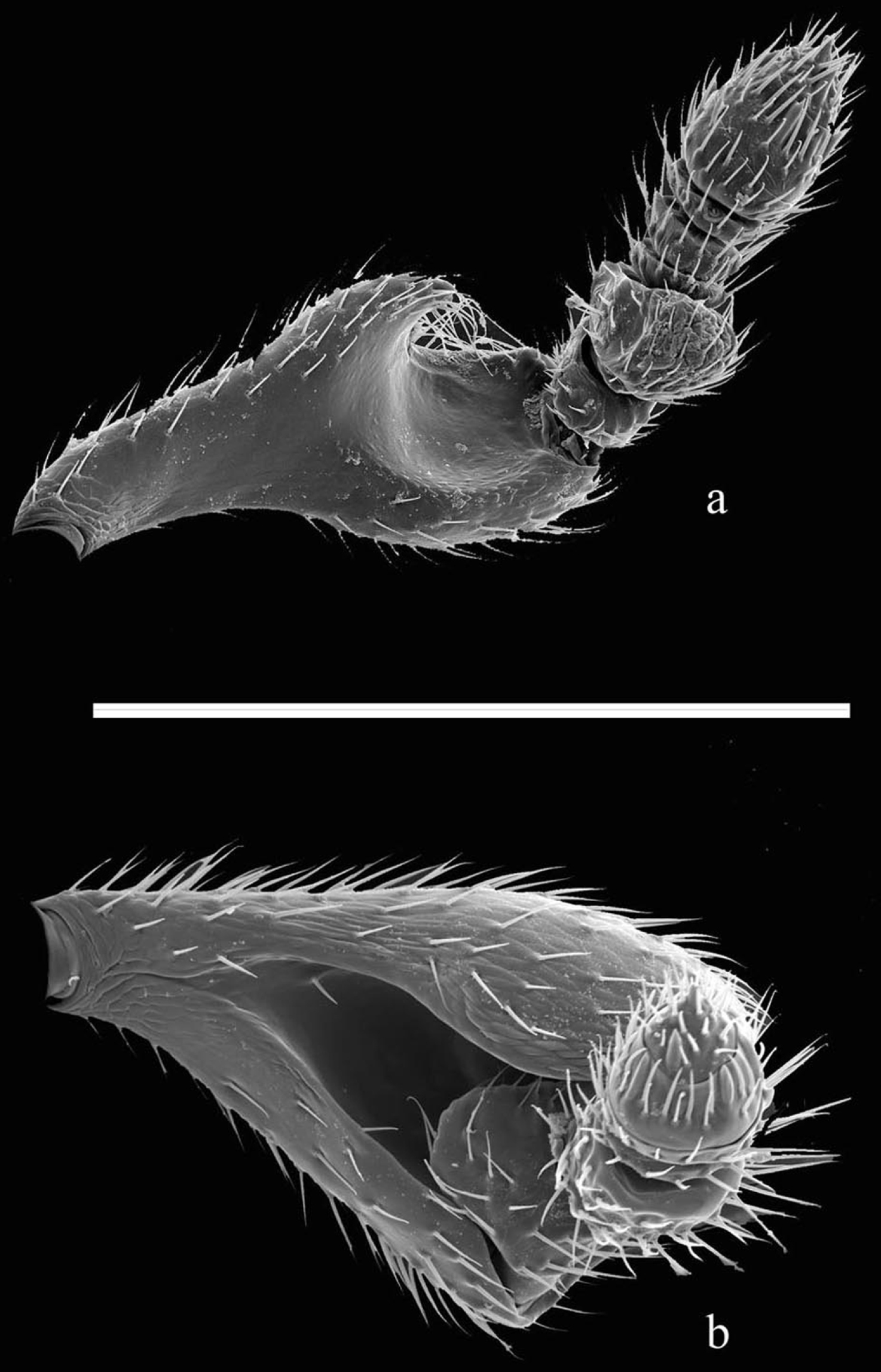






(C) 2012 Antonino Cusumano. This is an open access article distributed under the terms of the Creative Commons Attribution License 3.0 (CC-BY), which permits unrestricted use, distribution, and reproduction in any medium, provided the original author and source are credited.
For reference, use of the paginated PDF or printed version of this article is recommended.
Melittobia acasta and Melittobia australica are newly recorded from Sicily, Italy, and the second species is reported in Europe for the first time. A short historical background about Melittobia parasitoid wasps, their hosts, and distribution, with emphasis in those two species is presented together with illustrations to facilitate their identification. Brief discussion about the presence and possible distribution of the species in Sicily is also included.
Parasitoid wasp, Sceliphron spirifex, Osmia sp. , Sicily, Europe
Melittobia Westwood is a cosmopolitan genus of gregarious ectoparasitoids that primarily attack prepupae of aculeate Hymenoptera, but are also able to parasitize a wide range of hosts from the orders Coleoptera, Diptera and Lepidoptera (
Twelve species are known in the genus (
Melittobia australica Girault, was described on the basis of three males and ten females that emerged from Pison spinolae Shuckard (Hymenoptera: Sphecidae) (Girault 1912). This parasitoid is a nearly cosmopolitan species that has been reported from Australia and New Zealand, several countries of Africa, Asia, North, Central and South America, including a few Caribbean islands/countries (
Here we confirm the presence of two Melittobia species (Melittobia australica and Melittobia acasta) in Italy and provide the first record of Melittobia australica from Europe.
Materials and methodsCollections of trap nests and mud dauber nests were carried out during 2010 in western Sicily. Trap nests were built by pooling together about 10 pieces (Ø=2-3 cm; length=20 cm) of reed (Arundo donax L.) that were hung on trees located both in cultivated and uncultivated fields. Nests of mud dauber wasps were collected mainly from external walls of buildings especially in areas close to water sources.
A number of Melittobia wasps emerged from trap nests colonized by Osmia bees originally placed in the Palermo University campus (38°06’26”N, 13°21’07”E). The collected parasitoids were mounted and later identified.
One of several mud dauber nests constructed by Sceliphron spirifex L. (Hymenoptera: Sphecidae) collected in the town of Contessa Entellina (province of Palermo) (37°44'23"N, 13°08'27"E), had a cell containing a prepupae of its host parasitized with Melittobia wasps. Some were collected and placed on calliphorid pupae (Calliphora sp., Diptera: Calliphoridae) to be reared, while the rest were studied and identified. The parasitoids that emerged from these cultures were studied, identified and counted (Table 1).
Melittobia australica Girault emerged from six pupae of Calliphora sp., under laboratory conditions (25°C; 75% RH) at Dipartimento DEMETRA, Universitá degli Studi di Palermo, Sicily, Italy
| Host number | Males | Brachypterous females | Macropterous females | Larvae/Pupae* |
|---|---|---|---|---|
| 1 | 3 | 1 | 60 | 20 |
| 2 | 2 | 3 | 45 | 28 |
| 3 | 2 | 1 | 11 | 82 |
| 4 | 1 | 0 | 5 | 89 |
| 5 | 4 | 0 | 12 | 68 |
| 6 | 3 | 1 | 68 | 18 |
| Total | 15 | 6 | 201 | 305 |
| Mean | 2.5 | 1 | 33.5 | 50.83 |
* These larvae/pupae died during development.
A thorough review of literature was done in order to corroborate that the identified species indeed constituted a new record for the country. We were unable to review other insect collections besides the one at Universitá degli Studi di Palermo, and that of an amateur entomologist in Palermo. Voucher specimens of both parasitoid species and the hosts are deposited at the TAMU insect collection, College Station, Texas, USA and at Palermo University, Palermo, Sicily, Italy.
Results and discussionFour males and 63 macropterous females of Melittobia acasta were collected (and mounted) from a cell of Osmia sp. inside a trap nest.
A total of one male and 376 females of Melittobia australica emerged from a Sceliphron spirifex prepupa. It is worth noting that the factitious host Calliphora pupae appear to be highly nutritious and large allowing the development of brachypterous females (Table 1). From six cultures established using Calliphora pupae (four females/fly pupae) as hosts, fifteen males of Melittobia australica, as well as six brachypterous females, 201 macropterous females and 305 pupae/larvae emerged (see Table 1).
The easiest way to separate Melittobia acasta and Melittobia australica is by examining male specimens under a magnifying glass (10×–20×) or a microscope. Males of Melittobia acasta are 1.3–1.5 mm long, light brown or amber in color (Figure 1a); antennal scape has a cup-shaped depression, the distal region of the scape is strongly oblique with a broad excavation (Figure 2a) (
Males of Melittobia parasitoid wasps: a Melittobia acasta b Melittobia australica. Scale: 0.5 mm
Male antennae of Melittobia acasta a and Melittobia australica b. Scale: 0.25 mm.
Even though the North American species Melittobia chalybii Ashmead was once mentioned in an European country (Denmark) by
Even though Melittobia australica is a nearly cosmopolitan species, it has never been reported from Europe until now. The finding of this species in the town of Contessa Entellina, located about 80-90 km from the port of Palermo raises an interesting question: how long has it been in Sicily? Since the place where we found Melittobia australica in Sicily is in the interior of the island, we might suspect that the species is widely distributed on the island. It is important to note that several species of bees and wasps known from Sicily (
We would like to thank Angela Sinacori (Universitá degli Studi di Palermo, Sicily, Italy) who kindly gave us useful suggestions about collecting Osmia bees and their parasitoids by using trap nests. Thanks also to Carlo Polidori (Museo Nacional de Ciencias Naturales, Madrid, Spain) for identification of Sceliphron spirifex. We are also indebted to Freder Medina for the SEM photographs of the antennae of both Melittobia species that appear in Figure 2. We greatly appreciate the thoughtful comments and suggestions given by Bob Matthews, and an anonymous reviewer, which greatly improved the submitted manuscript.

